"We wanted as much gore and blood as possible": The Making of Robocop Versus The Terminator
Retro Gamer takes a look back at a 1993 cult classic
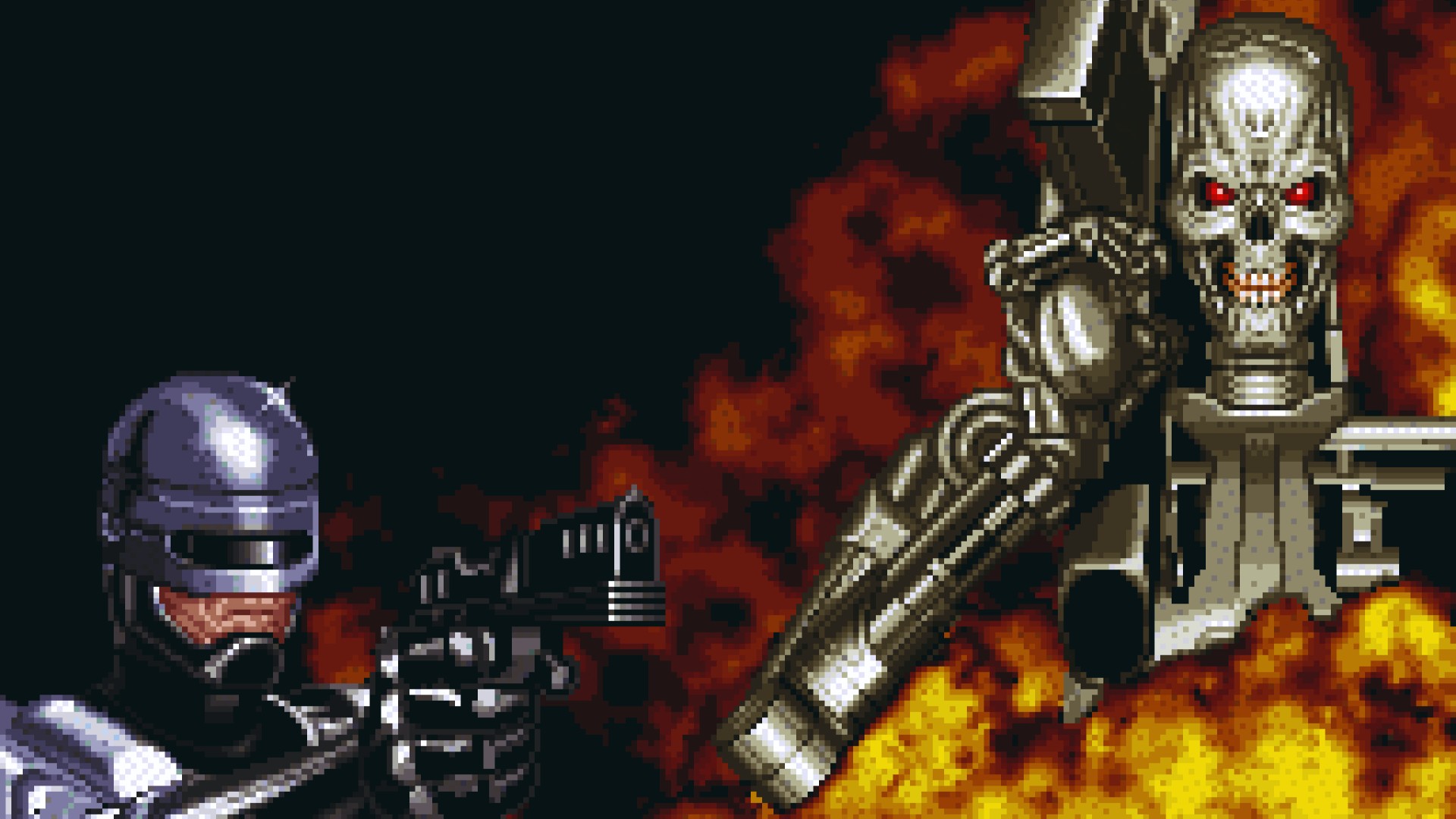
After notching one film apiece, The Terminator and RoboCop stood equal. Both had been incredible sleeper hits, totally unfancied at the box office, and demonstrated the pointedly adult sci-fi talents of maverick directors looking for their first major breakthrough hit. Then, when the inevitable sequels appeared, the two franchises began to diverge: 1991's Terminator 2: Judgment Day eclipsed even its predecessor and broke box office records worldwide, while RoboCop 2, released a year earlier, was very far from the success that the first film had been, both critically and commercially.
Bafflingly, a further Terminator film then appeared elusive, while RoboCop received a third, even more poorly received, outing in 1993 that made the heinous mistake of going ahead without its original star, Peter Weller. Nevertheless, thanks mainly to the UK's Ocean Software, there was already a rich vein of RoboCop-starring video games at this point, however the pixelated Terminator was lagging behind. It was time for a dramatic merging of these two violent worlds.
The story of RoboCop Versus The Terminator began as a Dark Horse Comics four-part comic book from 1992. Created by the legendary pairing of writer Frank Miller and artist Walter Simonson, the brief series involves a labyrinthine time-twisting plot, drawing officer Alex Murphy into the complex and grim realm of the Terminators and the resistance fighters who are bravely trying to end their reign of terror. Securing the licence for a video game based loosely on the comics, Virgin Games began developing RoboCop Versus The Terminator alongside another famous IP, Aladdin.
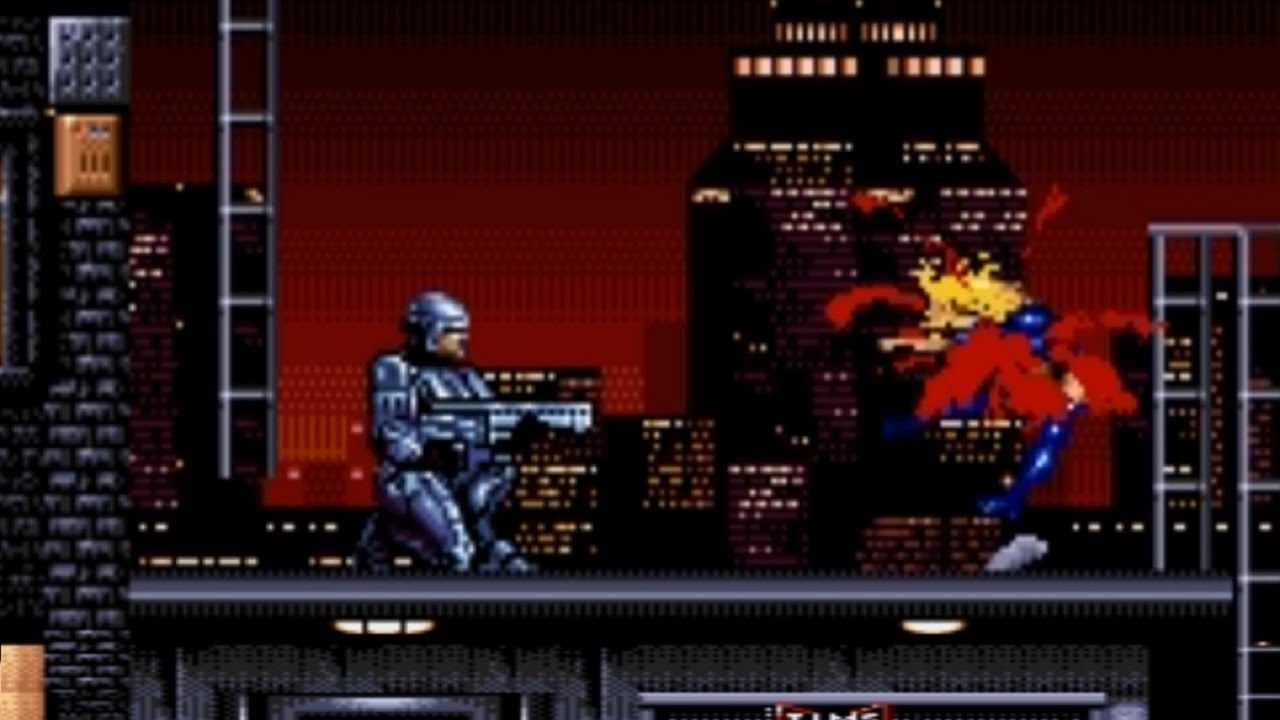
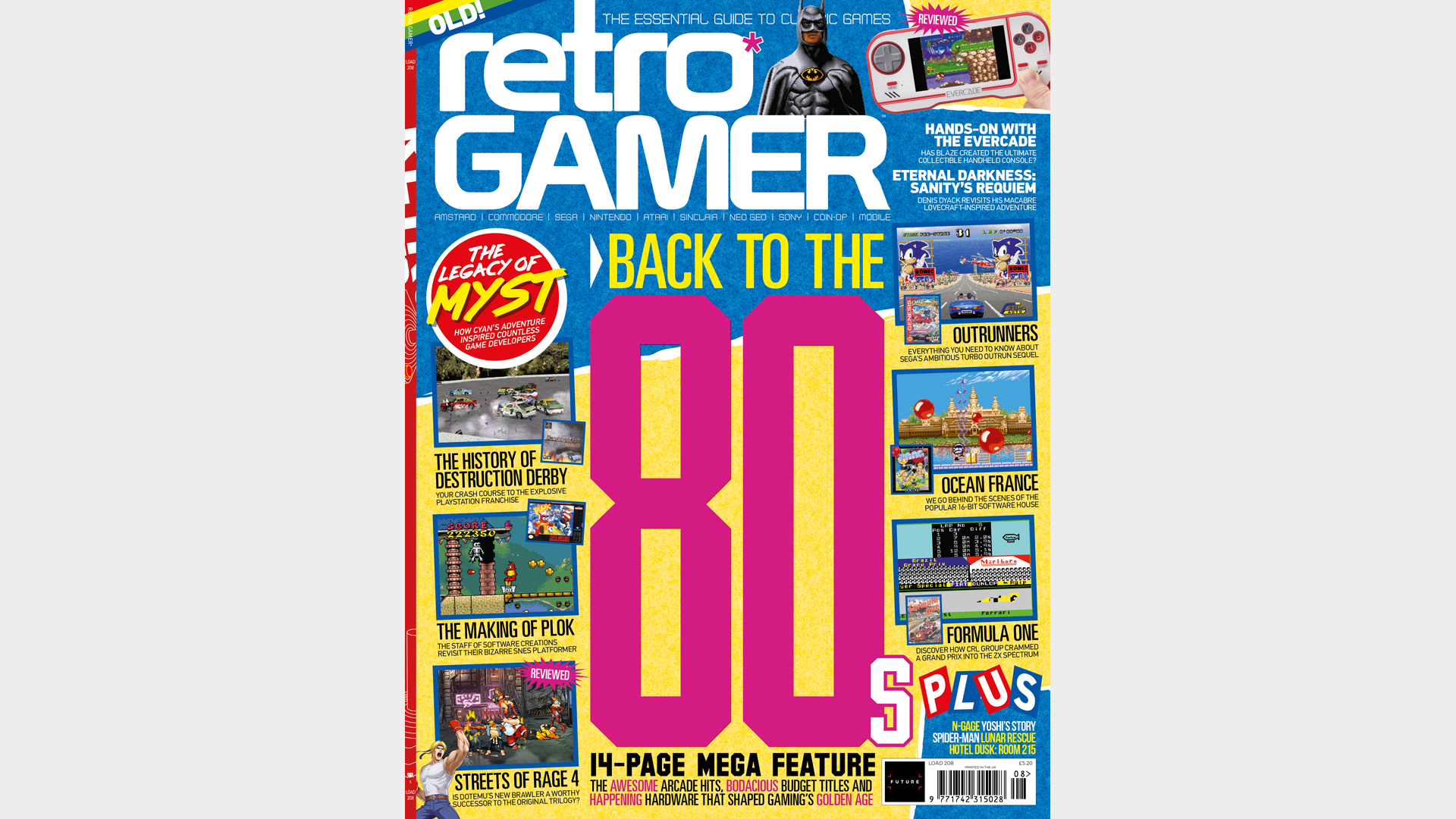
If you want in-depth features on classic video games delivered straight to your doorstop, subscribe to Retro Gamer today.
Working beside lead designer and coder John Botti was Tim Williams, and he explains how he came to work on the violent crossover. "I had got a job [at Virgin] testing games, and shortly after that, they moved me into their new design department, probably because I would always make loads of suggestions on the bug reports."
Tim co-worked on level design for Spot Goes To Hollywood and The Terminator on the Mega-CD before finally getting his own gig. "At the time I seem to remember there were more high-profile games at Virgin, like Aladdin, so there was a feeling that RVT was the ugly stepchild when I joined the team. But I was absolutely thrilled to get my own game to design for."
With the licence secured, but unable to use material from the comics, including its direct plot, Tim, John and Noah Tool designed its levels, tone and background. "We couldn't use any Dark Horse content," remembers John. "So Tim and I would sit up at night analysing Contra III: The Alien Wars, one of our favourite games. We wanted to figure out what it was that made the game so addictive."
The two concluded that the "vectored bullet", the slab of fire that introduces positional feedback into the game, was the key element, and it was duly incorporated as RVT's core game mechanic. "Within one week, people at Virgin were noticing the game and even getting hooked. It all happens in those late nights, when people are sitting around with no distractions!"
Sign up to the GamesRadar+ Newsletter
Weekly digests, tales from the communities you love, and more
Ultimate showdown
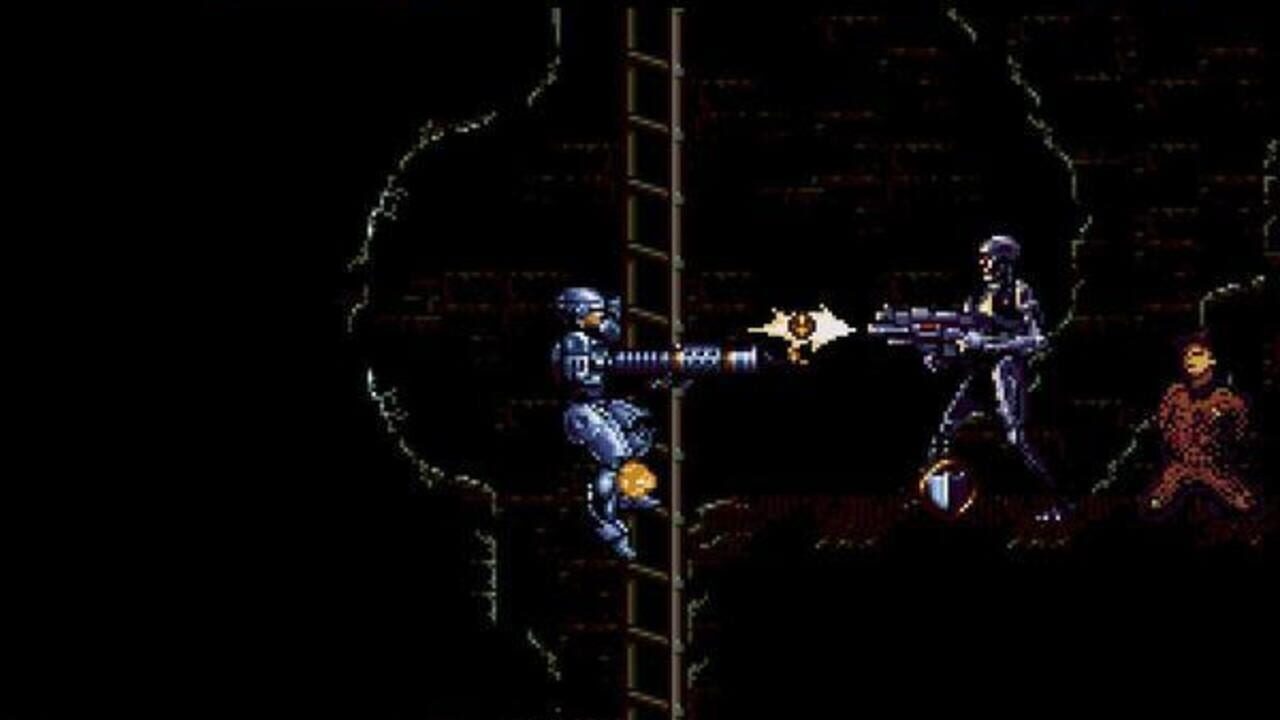
John Botti grew up in Long Island, New York, an athletic student with a penchant for latent nerdism. "I discovered the Scott Adams adventure games, and they captured my imagination. One day I thought, 'I could make my own adventure game.'"
Successfully founding his own business programming company at the tender age of 13, John subsequently enrolled in MIT, learning about computers, filmmaking, writing and more at the famous university. Graduating four years later, he moved to east LA, flat broke and exposed to one of the less salubrious parts of the city.
"Six out of seven nights per week, every summer, there was a shooting outside my building," he notes sadly. "It propelled me out of LA and down to Orange County, where I eventually got a job at Virgin Games. They brought me in to RVT after they'd bought the licence for $2 million. When I got to Virgin, no one else was on the project – I was it!"
In order to save both time and money, RoboCop Versus The Terminator utilised Dave Perry's Mega Drive engine, most recently seen in Cool Spot and Global Gladiators. "I had my own tools from previous projects," continues John, "but Dave's engine was clean, and it had been used on other Genesis games. I enhanced it, making a linked-list sprite object that allowed these huge monster bosses at the end of some levels."
In RoboCop Versus The Terminator, the player takes on the role of the eponymous armoured law enforcement officer. The devious Cyberdyne Systems, having won a contract to develop the Skynet defence system for the government, decides that RoboCop's neural networks, the only successful melding of human mind and computer to date, is the best template for its deadly new construct.
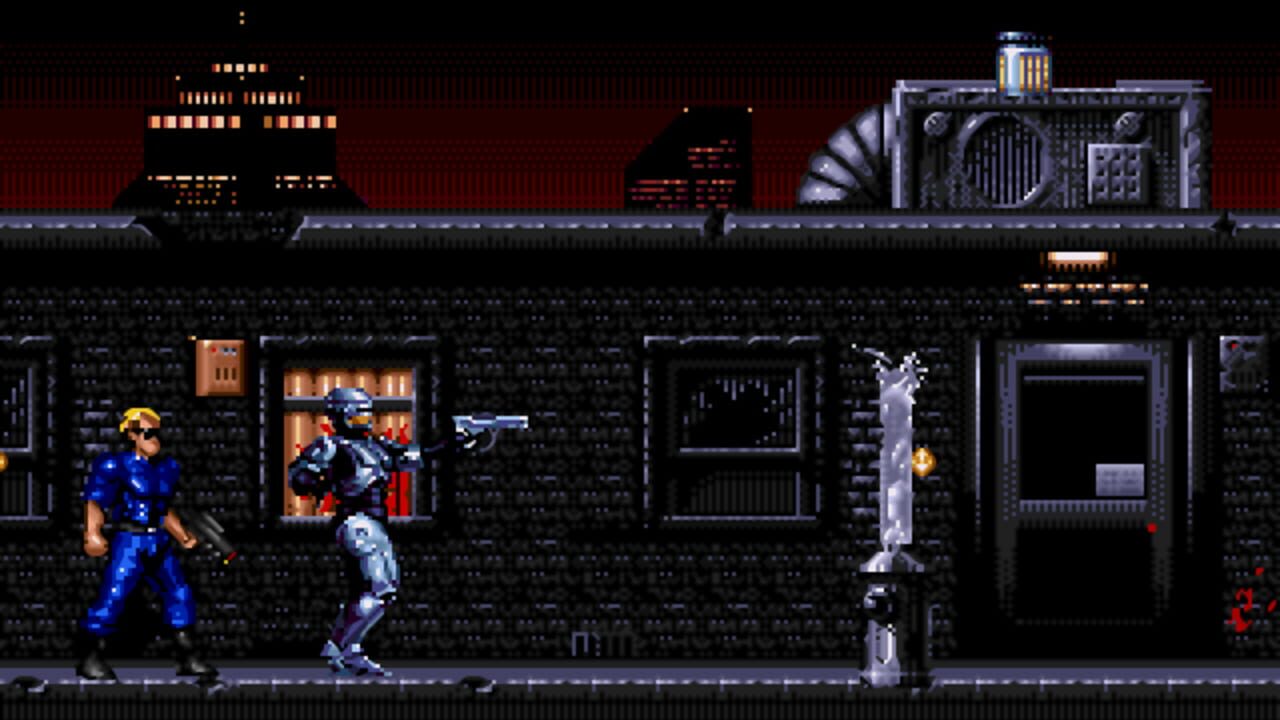
In the future, both humans and Terminators realise the importance of RoboCop, but the giant chrome policeman has ideas of his own. Planning to infiltrate OCP's computer and transport himself into the future to eliminate Skynet, RoboCop must first make his way through the streets of Detroit against a deadly army of thugs and Terminators, now more than aware of what he's up to. Perhaps in a reaction to the family fare that was being developed elsewhere at Virgin, RVT's designers upped the gore and violence to levels rarely seen on Sega's Mega Drive.
"We were all like 22 years old," laughs John. "And we wanted as much gore and blood as possible! Tim and I even installed switches in the game, so when the management came by, the game wouldn't look so violent." Tim credits artist Bob Stevenson with the large, shiny and detailed graphics that lend the game its unique look.
"The whole project got a boost when Bob arrived and went to work recreating the old RoboCop that was in there. It looked so much better, and generated a lot of excitement. With the blood and gore, we did feel we were being a bit naughty including it – but around this time Mortal Kombat was coming out, so we thought we'd add a slightly tongue-in-cheek version."
This over-the-top approach inspired a plethora of memorable imagery: exploding Terminators, spinning handguns and blood-stained windows were just some of the things that faced RoboCop on every level, a far cry from the game's condition when Tim first began work.
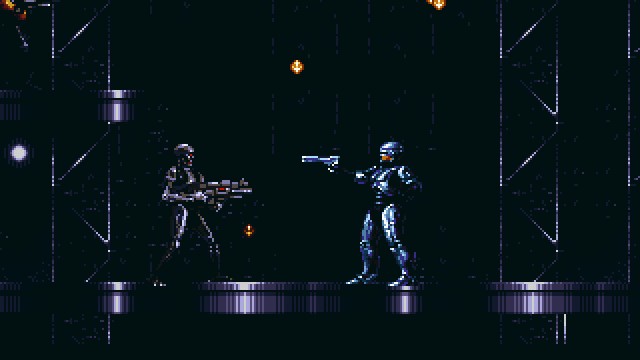
"When I started, one of the biggest issues in the game was that it was just average to play. You'd walk, fire, walk... and that was about it. One of the big factors that changed this around was looking at the arcade games out there and learning from them. How did the projectiles move? What were the speed of things? RoboCop could jump and duck, so we created projectiles that forced him to constantly do this, and we'd time it so that the player, with skill, could master the sequencing of shots."
Tim's overarching ethos was to create levels where a skilled player could get through without being hit. "I always wanted the player to know that if they got hit, it was their own fault, and with some practice, they could do better."
To give greater variation, some levels include further requirements such as rescuing hostages or destroying security cameras, with familiar scenes from the movies as the backdrop. From the thug- heavy streets of Detroit to a toxic waste dump, OCP offices and the hostile future, there's plenty for fans of both movies to recognise and enjoy. Furthermore, the overblown theme of RoboCop Versus The Terminator was perfectly encapsulated with RoboCop's arsenal, of which his own sizable pistol is relegated to minor status. "It was important to have weapons that really did do different things," notes Tim, "and also ones you would be thankful to receive in certain areas."
RoboCop can carry two guns at a time; if he picks one up, it replaces the one not currently wielded. With John Botti taking inspiration from Contra III, each weapon would be designed by him before Bob Stevenson and Tim honed their appearance. From the fun directional manipulation of the grenade launcher and blazing flamethrower, to the powerful bazooka, and a very useful homing missile gun, managing RoboCop's weaponry is the key to success.
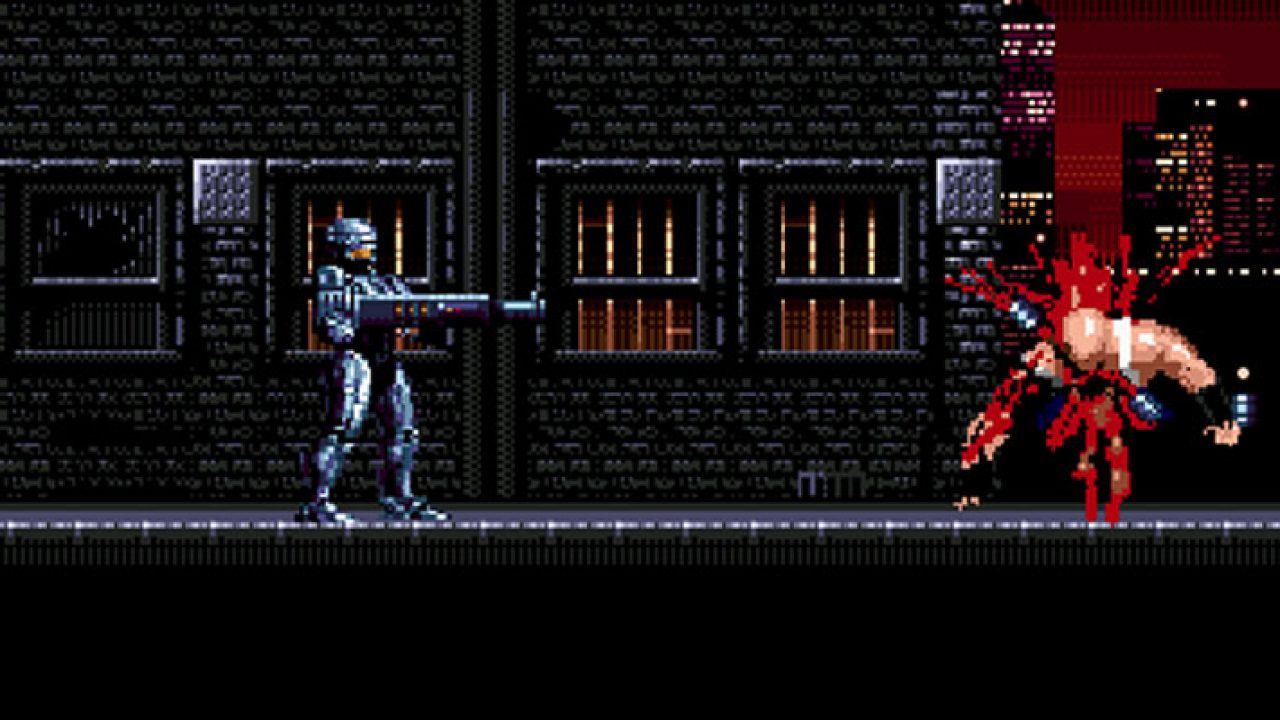
And for fans of the movie, there's nothing finer than picking up the massive Gatling gun from a stricken ED-209, which emits short high-powered bursts of fire, complete with an authentic 'budda-budda-budda' sound. With its violent gameplay that encouraged exploration in order to discover valuable secrets, the guns of RVT were a critical element for the team. And compared to similar projects at Virgin, RoboCop Versus The Terminator employed a small squad of employees.
"It was one of the best teams I've worked with, even though there were really just four of us – me, Tim, Bob and Noah," remembers John. An unofficial fifth member of the team came from an unexpected direction. "Every day, after the janitor was done, he would stop by my office at 11 or 12 midnight to see the latest cool things we'd put in the game," smiles John. "One night in particular, I was showing him how RoboCop could catch on fire, a cool little gag. The problem was design – how do you put him out?"
The onlooking custodian offered an equally cool solution. "He suggested that if you shot the sprinkler systems it would rain water down on RoboCop, and put the fire out, essentially saving his life. We also had fire hydrants that did the same thing, creating this urgent game-within-a-game, trying to find a way of putting the fire on RoboCop out." With Tommy Tallarico helping to construct the game's robust sound design ("It's just phenomenal – I don't think I've ever heard another game like it," gushes Tim), its designers laid out each stage, complete with multiple levels, improbable zip wires for RoboCop to traverse and a host of absurdly unrestrained gameplay.
Drop it!
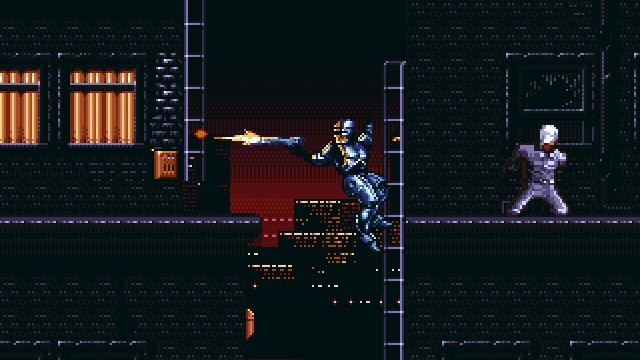
“It was important to have weapons that really did do different things”
Tim Williams
Development was swift, starting with John's exploration of the bespoke engine in August of 1992, through to release in the winter of 1993, and the reception was generally positive, with critics appreciating the tongue-in- cheek nature of the game. Likened to an arcade game, RoboCop Versus The Terminator's style separates it from its peers and secured Virgin a hit away from its family-friendly fare such as Cool Spot and Aladdin.
"It was a really fun time in my life," recalls John. "We were all young, and single and focused with no families, and it was a magical time where games programmers and designers ran the team. But you were also fully accountable for the success or failure of your game – if it sucked it was your fault!"
While Tim has some reservations about the gameplay – most notably the extremely high hit point count of the final boss – overall, he echoes John's positive sentiments. "All around the office there was a good feeling, as if we'd managed to pull a rabbit out of the hat, and making a game that was really fun to play."
This feature first appeared in Retro Gamer magazine issue 205. For more excellent features, like the one you've just read, don't forget to subscribe to the print or digital edition at Magazines Direct.
Graeme Mason is a freelance writer with an expertise in all things retro gaming. Alongside his bylines at GamesRadar, Graeme has also shared his knowledge and insight with Future's Retro Gamer and Edge magazines, as well as other publications like The Guardian and Eurogamer.


